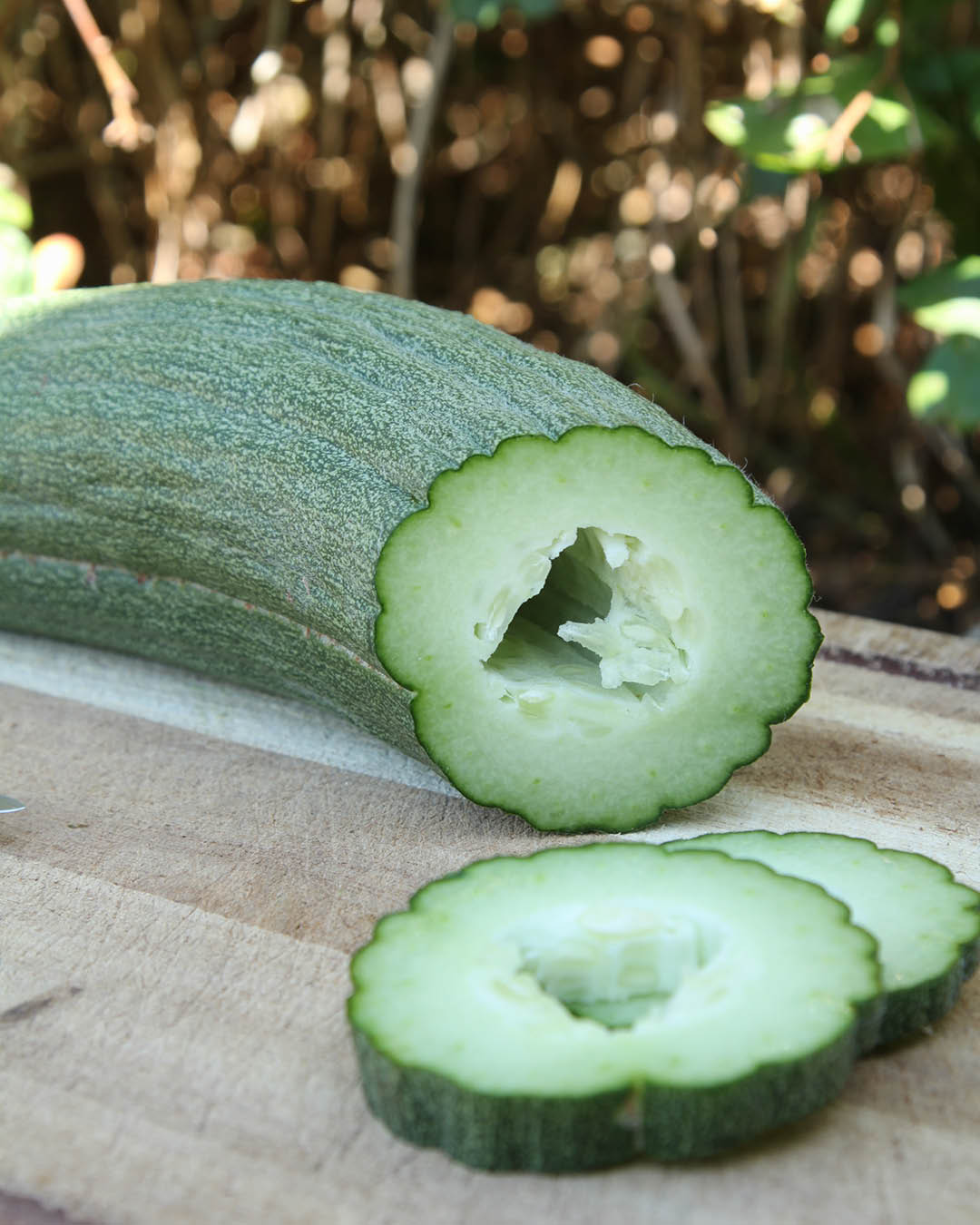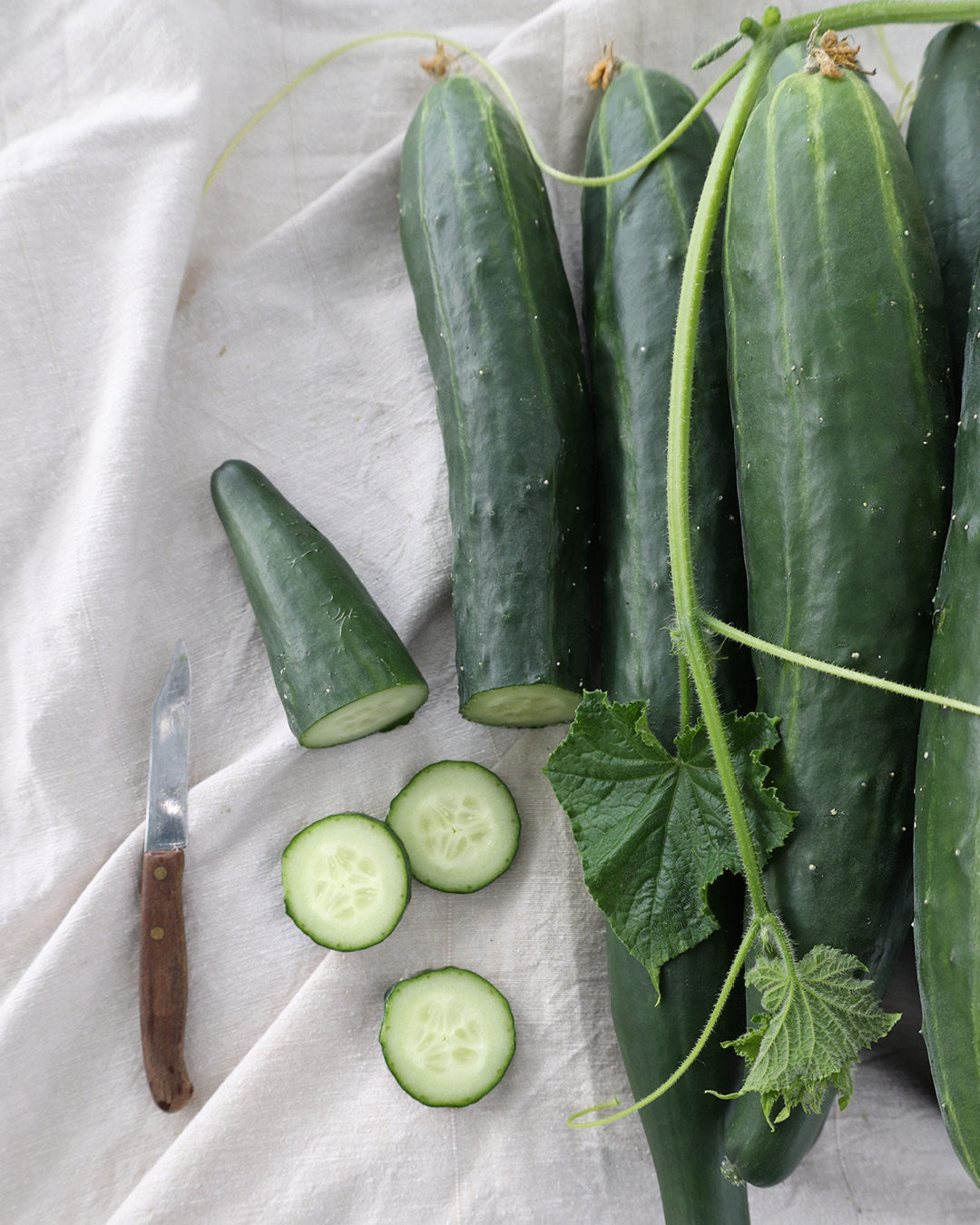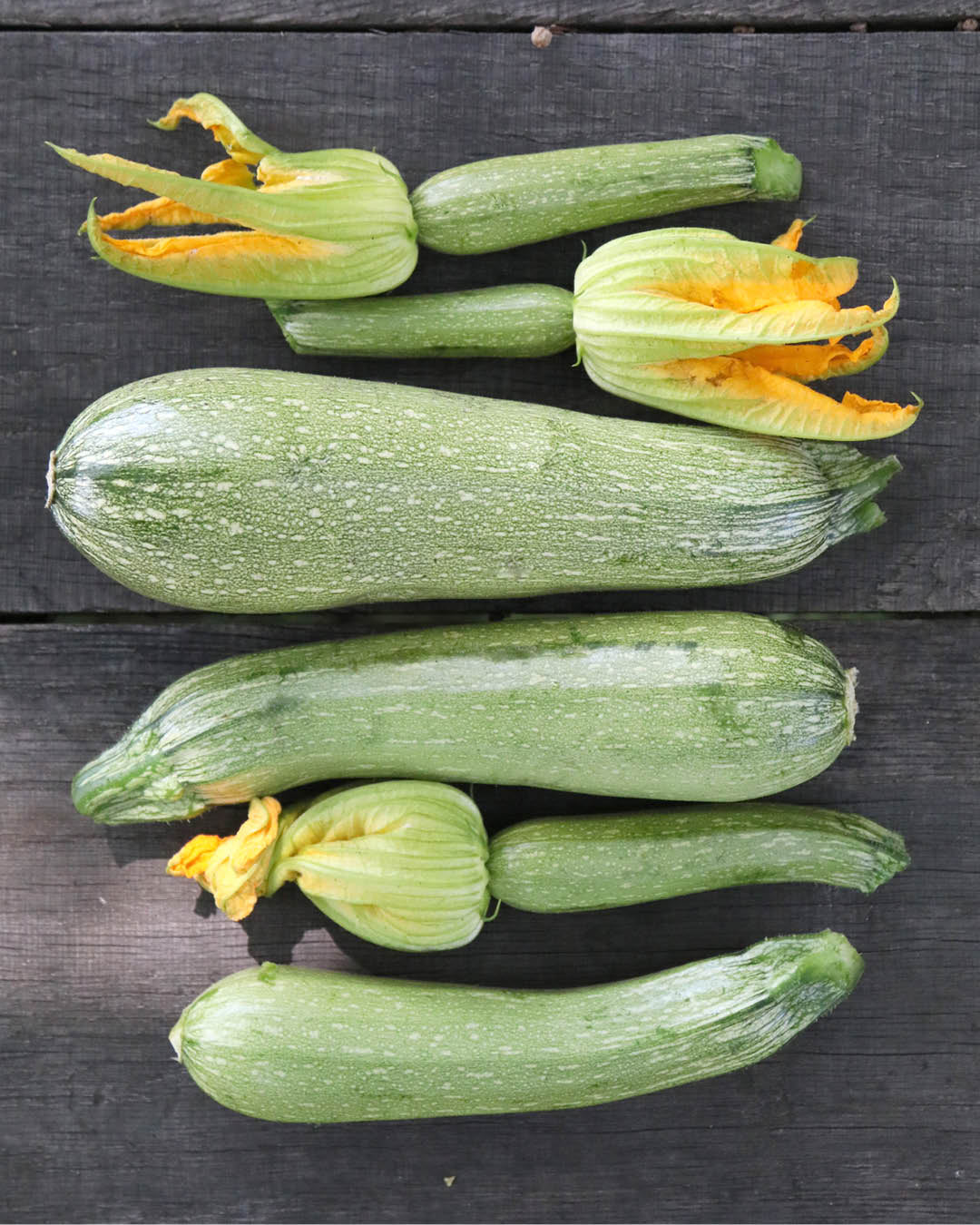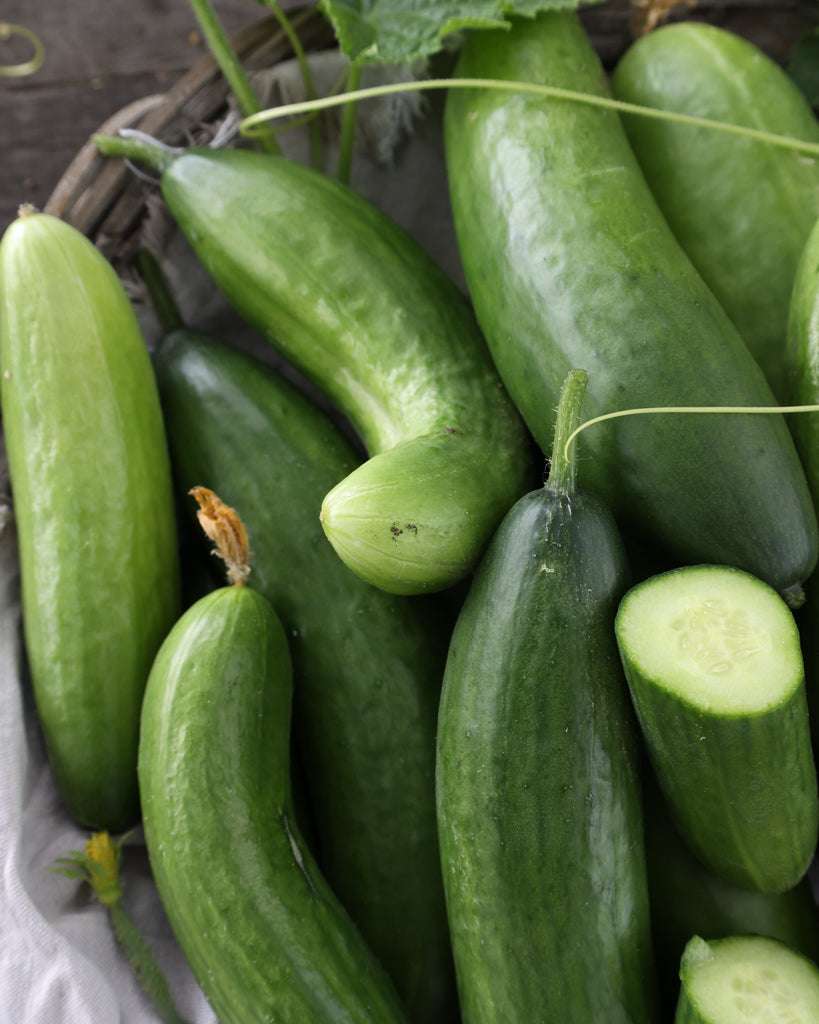cucumbers
The large, green fruit belongs to the gourd family and, depending on the variety, is a climbing or creeping plant. Cucumbers (Cucumis sativus) require a lot of warmth and can therefore only be cultivated in summer here. However, with sufficient fertilization and a few tips, you too can soon experience the joy of your own cucumber harvest!

Planting time – When is best?
Sowing should not take place until after the Ice Saints, i.e., starting in May, as cucumbers are sensitive to cold. You can start the plants in a greenhouse or on a windowsill, or purchase seedlings from a garden center. Pay attention to the variety when purchasing: so-called F1 hybrids are generally more resistant to disease and contain fewer bitter substances and seeds.
Growing cucumbers – how does it work?
When sowing seeds in pots, use three seeds per pot and store them in a warm, sheltered location (at least 20°C). Planting the seeds vertically protects them from rotting. If you have grown plants indoors, you can plant them in the bed about 80 cm apart as soon as the risk of frost has passed. However, it is important that the young plants are hardened off. At this point, you can also sow directly into the bed. Fleece or a polytunnel are helpful for protection from the cold. Trellises are particularly recommended for cucumbers, as they guarantee better sunlight exposure.
Location – Where is best?
Nutrient-rich, fresh, and loose soils are ideal locations for your cucumber bed. Small embankments, hills, or raised beds are even better. The soil should be well fertilized with manure or compost. Cucumbers also prefer a sunny, warm, and sheltered location.
Care – What needs to be done?
Once the seedlings have developed three to four normal leaves, it's time for the first fertilization. To increase yield and control growth, pinch off the tip of the main stem above the third or fourth leaf. Once the plants have established their roots, apply a second fertilization with mineral fertilizer or nettle manure in July or August.
Regular fertilization is also important for the development of cucumbers, preferably with temperate water.
Harvest – What should you consider?
From late June to mid-September, you can harvest cucumbers at a length of 15 to 20 cm. To do this, cut the vegetables off at the stem with a knife. Fresh cucumbers can be stored in the refrigerator for up to three weeks, but away from apples.
Mixed culture – What are good neighbors?
Carrots, peas, celery, beans, corn, beets, and dill are good partners for cucumbers. Potatoes, tomatoes, and radishes are less suitable.
Botany – What kind of plant is this?
The cucumber belongs to the gourd family and is an annual plant. It grows prostrate or climbing and spreads over an area of up to four meters. Its green fruit is a berry and can grow up to 50 cm long. The heart-shaped leaves are stalked, coarsely hairy, and up to 20 cm wide. Cucumbers are generally divided into two groups: the salad cucumber (also known as a snake cucumber) and the pickling cucumber (also known as a pickling cucumber).
Cultural history – How did the cucumber come to us?
Cucumbers were probably cultivated in India and other Asian countries as early as three thousand years before Christ. From there, they spread throughout Asia. Particularly long and slender cucumber varieties were bred primarily in China and Japan. The ancient Romans also had sophisticated cultivation systems, growing cucumbers in rolling baskets that they aligned with the position of the sun. Via Greece, cucumbers eventually found their way to the Balkans. Gradually, they spread to Eastern Europe. In East Germany, cultivation areas for the green fruit emerged, particularly in the Spreewald, Berlin, and Halle. Cucumbers also play a traditional role in the diet of Slavic peoples. Today, cucumbers are one of the most economically important vegetables; in Europe, the main producers are Spain, Poland, and the Netherlands.
TEXT: Merle Hildebrandt
















